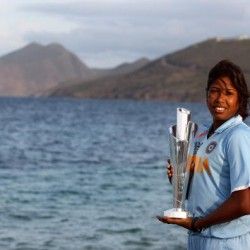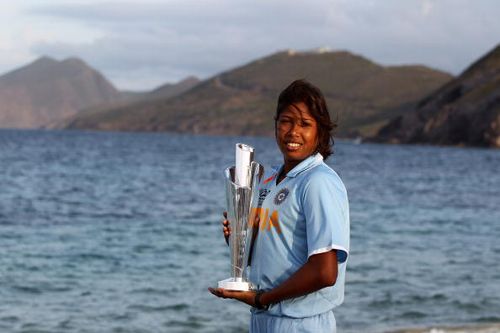
Jhulan Goswami: The Giant Babul of Bengal

Jhulan Goswami
In India, cricket is considered as a religion, a strangely staunch religion at that and one with arguably the biggest number of followers. The cricketing athletes are pretty much the deities of faith and pride for every Indian.
The sport in the country pretty much believes in patriarchal system more than any other. The men are all over the place. The billboards, merchandises, ads, fame and bucks all come to them. Women cricketers are the invisible spirits in a country that worships the game. Such species, however, do exist.
There is an entire women’s team for Indian cricket, which has its own lineage of legends, too. Legends who have their cases full of awards, trophies, records and victories. They don’t have something though, something which is pivotal for athletes to feel complete. That something is recognition; a little attention from not only the cricketing boards but also from the fans around the nation.
I realized that it will be nice to celebrate the life of a successfully empowered woman by sharing her story. It is a story that not only speaks about how hard it is for a female cricketer to succeed in this cricket crazy nation but also about how when she decided to realize her dreams, there was no stopping her.
The title must have spoilt the name already; this is the story of one lanky 5’11” fast bowling all-rounder from Kolkata named Jhulan Goswami.
Goswami is one of the pivotal members of the amazingly talented Indian squad. Although not very strongly built, she bowls with a smooth, easy run-up and has been the lead strike bowler for the Indian squad. Fastest female bowler in the world right now, constantly hitting the 120kph mark, she is notorious for generating movement off the pitch when she lands the ball on the seam.
With a career batting average of 29 and bowling average of 16, she is way better than any of the male all-round performers with the exception of the great Kapil Dev.
“They used to thrash me all around for sixes because my bowling was so slow. So they asked me to stop bowling at them and just go and bat. It was then that I made up my mind to bowl fast,” Jhulan confessed while receiving the best cricketer of the year award a couple of years back.
Having started her training at an age of 15, Babul, as she is fondly called by family and friends, faced a lot of hardships, which included travelling close to 80 kilometres on a day-to-day basis.
She said during an interview a few years back, “I used to get up at 4.30 am in the morning so I could catch the train and reach in time for the practice session. But many times I missed the train and used to reach late for practice; but I never lost heart.
“It was really a tiring schedule, as I had to travel for more than five hours in a day, then come back, have a rest for a while and again go back for studies. There were less time to rest and more time to work.
“Initially my mom and dad were a bit reluctant about me taking up cricket. But I had already decided that I wanted to be a cricketer.”
She added further, “I made this decision after watching the 1997 women’s World Cup final between Australia and New Zealand in Kolkata. That day I decided that even I want to play at the highest level.”
She also went to the MRF pace academy, where she got to meet the legendary Dennis Lillee who gave her a lot of useful tips about pace bowling.
Goswami took inspiration from Neetu David, who was the highest wicket-taker for India in ODIs in the female version of the sport with 141 wickets before Goswami surpassed her.
“Neetu David is like a legend for me. She is a very good bowler and even in overseas tours she used to take wickets so frequently. She is a very tough customer to handle, and she in a way showed us how to take wickets. She is not only the best India bowler, but is one of the best in the world, as well.”